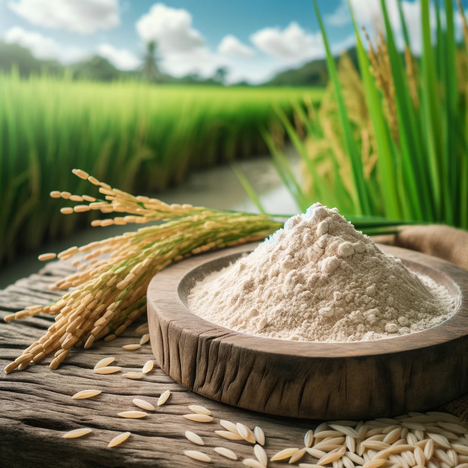Rice bran flour

In the world of dog nutrition, there is a constant search for ingredients that not only enrich the meal but also bring health benefits. Rice bran meal, a by-product of rice processing, has been attracting attention recently, not only as a potential ingredient in human diets, but also as a supplement in the food of our four-legged friends. But what exactly is rice bran meal, and is it really a good choice for dogs? In this article, we take a closer look at rice bran meal, exploring its benefits and potential drawbacks to come to an informed assessment of its suitability for canine nutrition.
What is rice bran flour?
Rice bran flour is produced when brown rice is processed into white rice. During this process, the outer layer, the bran, is removed and can be ground into flour. This flour is rich in nutrients, including proteins, fats, vitamins and minerals, which would otherwise be lost when the rice is polished. Rice bran flour is often valued in the human diet as a source of fiber or as a gluten-free flour option.
Benefits of rice bran meal for dogs
Rich in nutrients
Rice bran flour offers a wealth of nutrients that can be beneficial to dogs' health. It contains essential fatty acids that contribute to skin and coat health, B vitamins for energy production and antioxidants that support the immune system.
Source of fiber
With its high fiber content, rice bran meal can promote healthy digestion and help regulate bowel movements. This is particularly beneficial for dogs with digestive problems or those prone to constipation.
Gluten free
For dogs with a sensitivity or allergy to gluten, rice bran meal offers a safe grain alternative that can be fed without the risk of allergic reactions or digestive discomfort.
Possible disadvantages and concerns
High fat content
The relatively high fat content of rice bran meal can lead to weight gain if fed in excess. It may also be contraindicated in dogs with specific health conditions, such as pancreatitis.
Rancidity
Rice bran meal tends to go rancid quickly due to its high unsaturated fatty acid content. Not only can this affect the taste, but it can also lead to a loss of nutritional quality and contain potentially harmful oxidation products.
Limited studies
Although the potential benefits of rice bran meal for dogs are theoretically sound, there are limited scientific studies to date that specifically demonstrate these benefits in dogs. Therefore, its use should be carefully considered and, if necessary, discussed with a veterinarian or canine nutritionist.
Rice bran meal can be a nutritious addition to your dog's diet, particularly due to its high nutritional content and its role as a source of fiber. However, as with any supplement or change in a dog's diet, it is important to control the amount carefully and watch for signs of intolerance or negative health effects. The high fat content and tendency to go rancid require careful storage and moderation in use. Ultimately, when introducing rice bran meal or other new ingredients into a dog's diet, it is advisable to do so gradually.
If you notice any signs of hypersensitivity or poisoning in your dog, you should see your vet immediately. We are not a substitute for a vet, but we try to be as accurate as possible. Every dog reacts differently and we recommend you get a second opinion or consult your vet if in doubt.
Stay healthy and take good care of your four-legged friend!😊